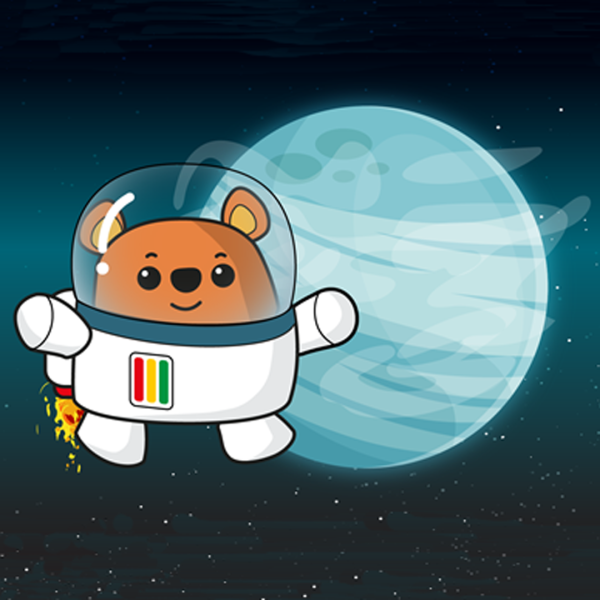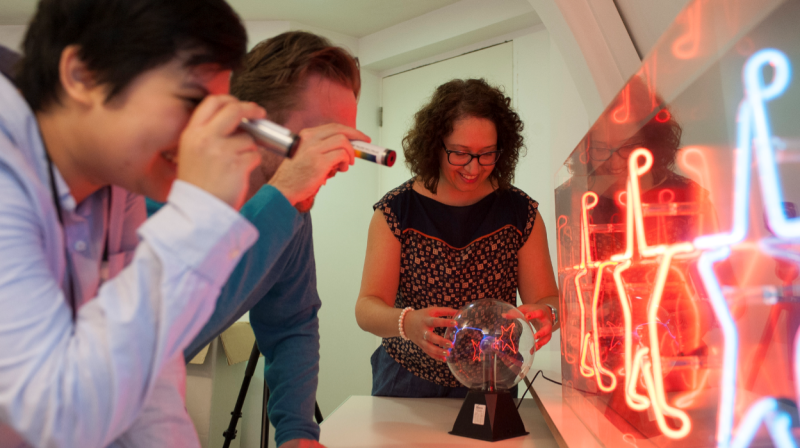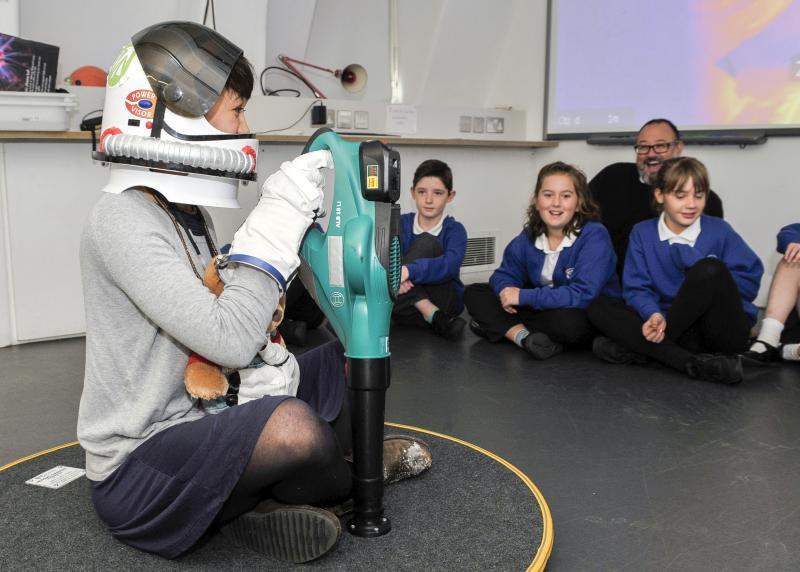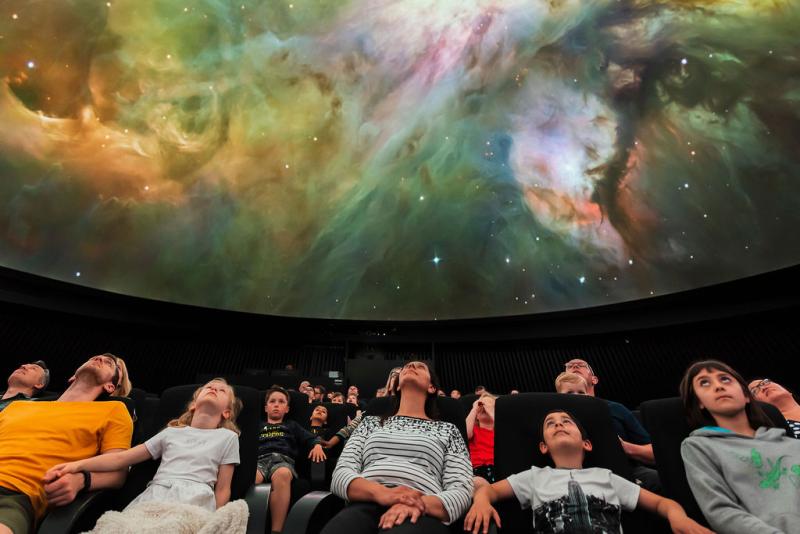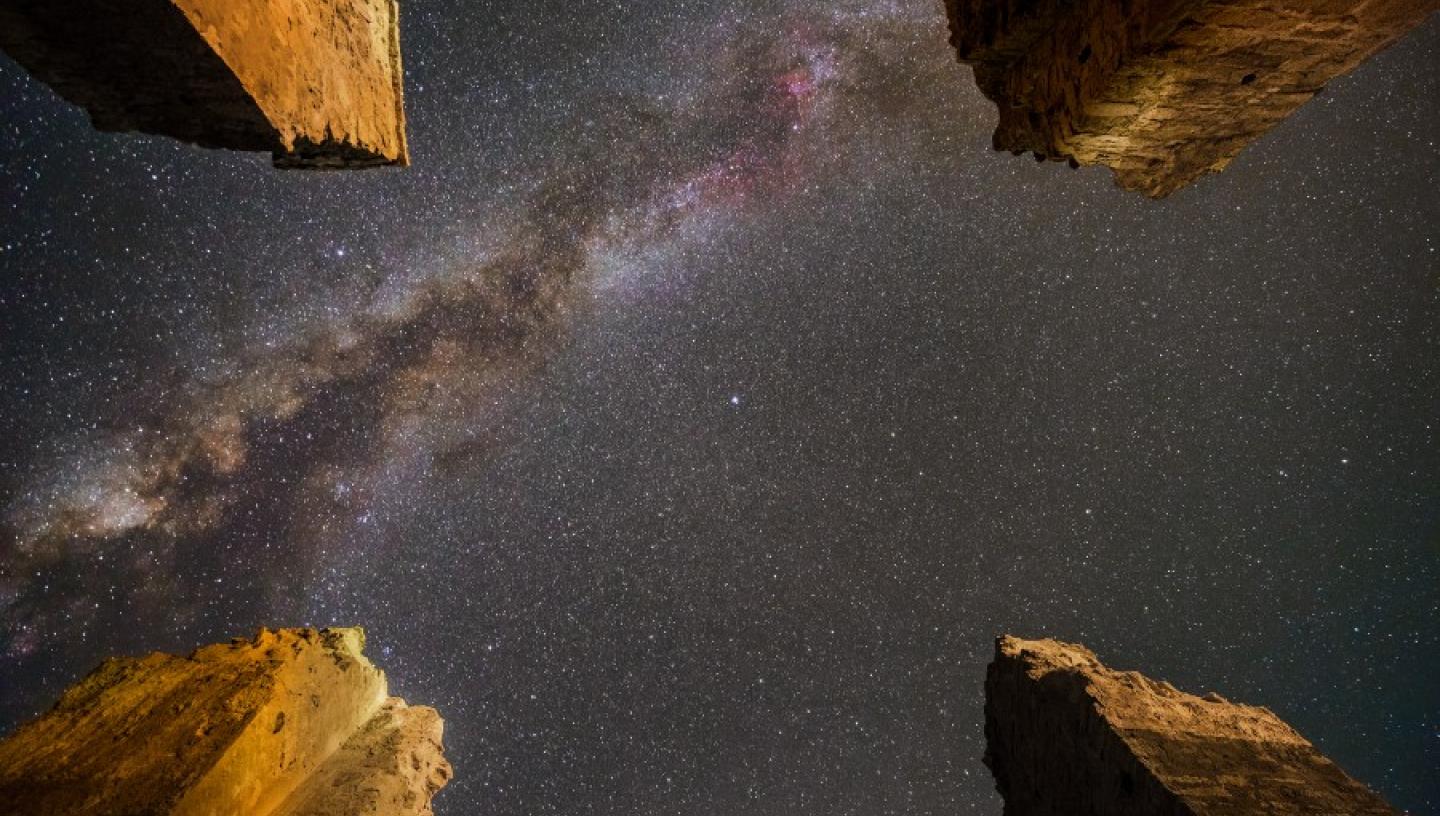
Discover what to see in the night sky in September 2021, including the gas giants Jupiter and Saturn, and wonderful deep sky objects in the Milky Way.
Top 3 things to see in the night sky in September
- Throughout the month - Explore some of the wonders of the Milky Way
- 10 September - Spot a thin waxing crescent Moon along with Venus and Mercury just after sunset
- 22 September - It's the autumnal equinox which marks the beginning of autumn in the Northern Hemisphere
(Details given are for London and may vary for other parts of the UK)
Look Up! Podcast
Subscribe and listen to the Royal Observatory Greenwich's podcast Look Up! As well as taking you through what to see in the night sky each month, Royal Observatory Greenwich astronomers pick a topic to talk about.
For September, they're talking about NASA's broadcast of a special message to the real world analogue of Star Trek's planet Vulcan, and they'll be chatting about how a paradox that puzzled solar astrophysicists has been solved.
Have a listen below, then vote for your favourite story from this episode on our Twitter poll (@ROGAstronomers) during the first week of September.
Our podcast is available on iTunes and SoundCloud
Astronomy in September 2021: key events and what to see
Throughout the month: the Milky Way and deep sky objects
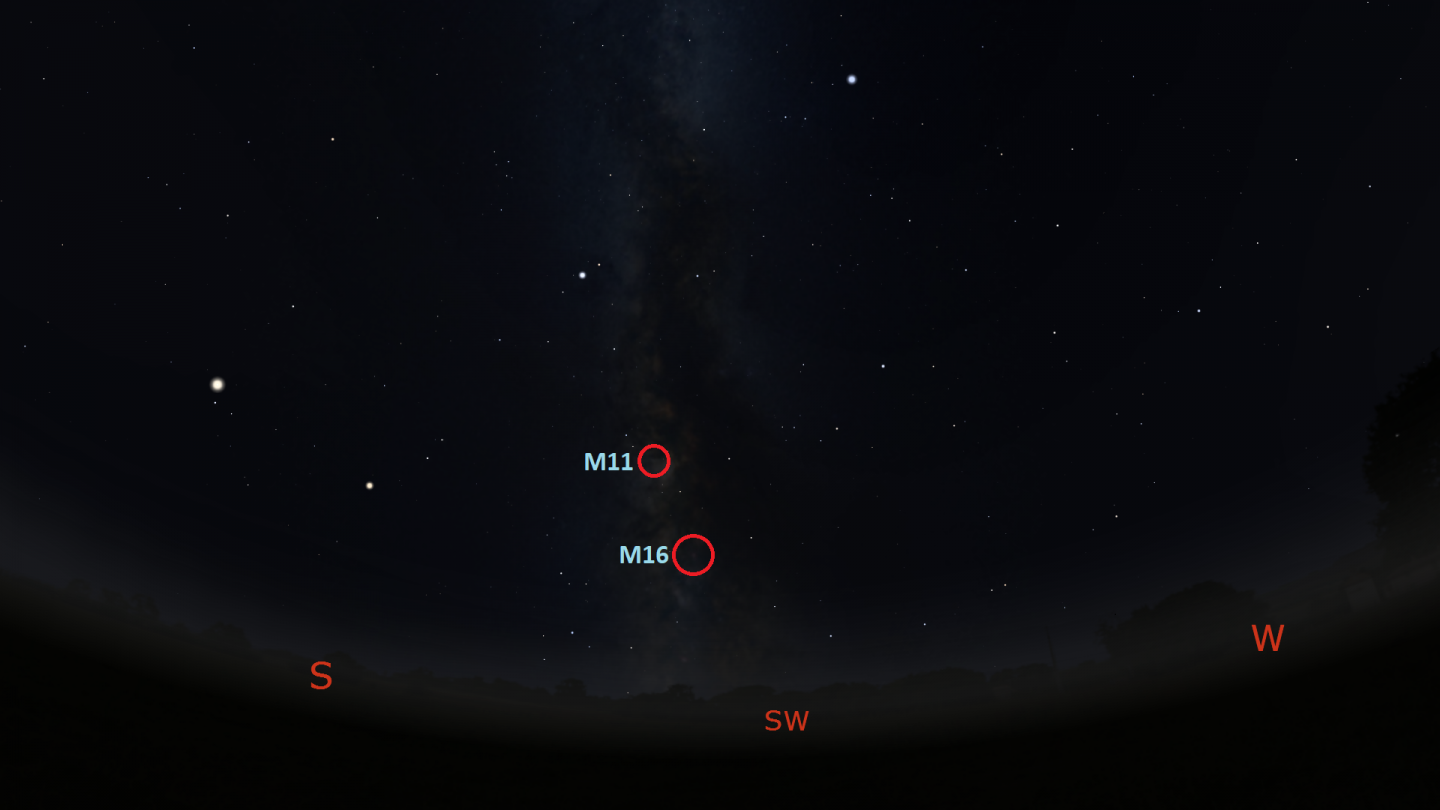
With new moon occurring on the 7th, the beginning of the month marks the best time to observe some of the dimmest objects in the night sky without the Moon’s bright light getting in the way. Try spotting our home galaxy, the Milky Way, which appears as a fuzzy band stretching across the sky. Look towards the south and you’ll see the broadest part of our home galaxy lying low above the horizon.
There are some wonderful deep sky objects scattered throughout the band of the Milky Way, including M16, the Eagle Nebula, a massive star forming region located between 5,500 and 7,000 light-years from the Earth. Head further up the Milky Way and you’ll find M11, an open star cluster known as the Wild Duck Cluster, a little over 6,000 light years away. Of the star clusters listed in the Messier catalogue, M11 is the most distant that can be seen with the naked eye – so as a challenge, see if you can spot it unaided. If you can’t see it by eye, then grab a pair of binoculars and you may have better luck seeing the star cluster as a triangular patch of light.

If you continue your journey up along the Milky Way, you’ll spot the bright star Deneb from the constellation of Cygnus. Lying next to Deneb is the North America Nebula, an emission nebula located 1,700 light-years away. Trust as when we say that you’ll definitely want to have a pair of binoculars at hand to enjoy the sights of this deep sky object.
Throughout the month: the planets
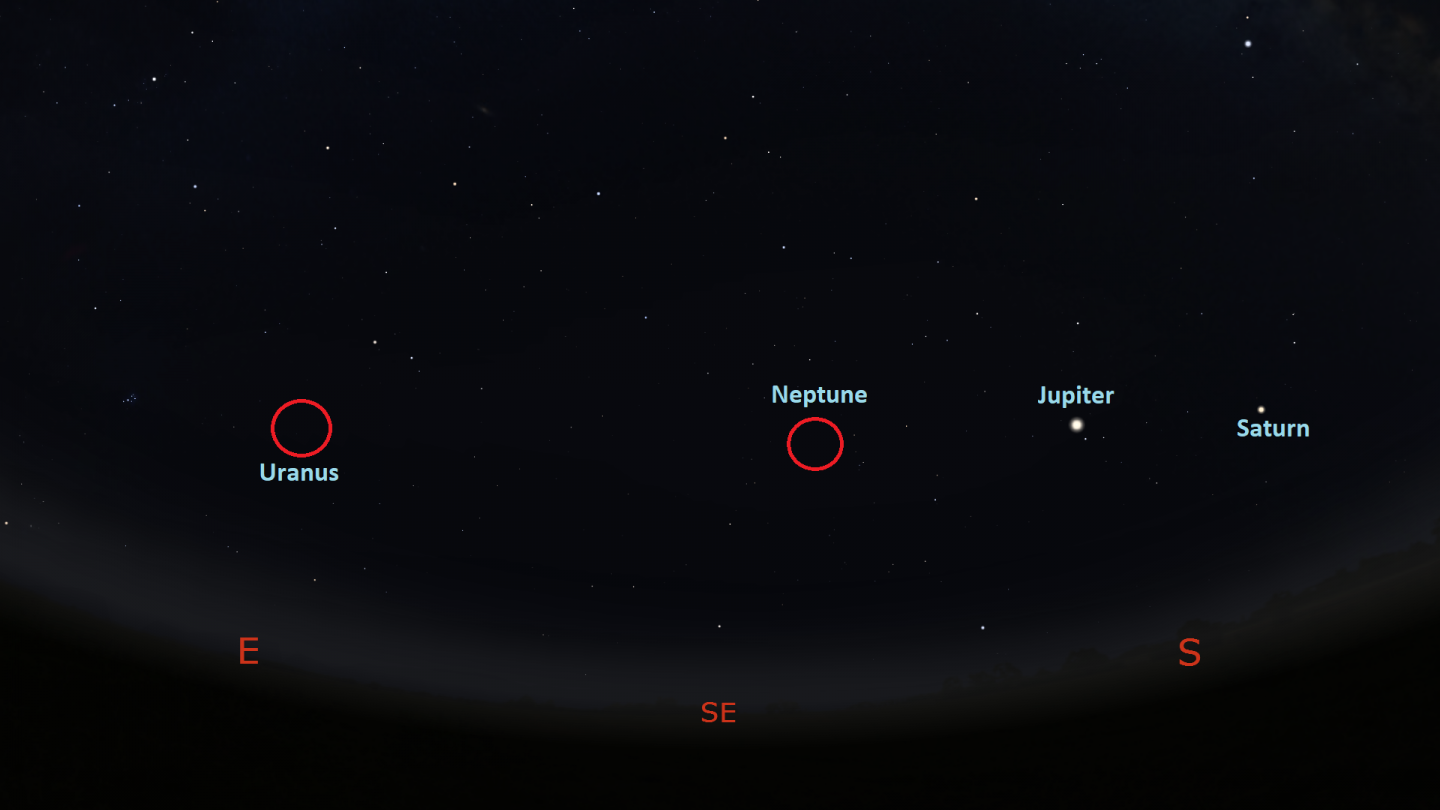
For those keen on doing some planetary observations, you have plenty to choose from this month. The gas giants Jupiter and Saturn continue to dominate the southern sky in the evenings and are easy to spot by eye. Both planets are also worth a look at through a pair of binoculars or a telescope. Saturn is arguably the most rewarding planet to view through a telescope thanks to its mesmerising ring system.
Joining Jupiter and Saturn are the distant ice giants Uranus and Neptune. Uranus is on the threshold of visibility due to its sheer distance from the Earth – if you have good eyesight and excellent observing conditions, you might just be able to spot it, however Neptune, with its apparent magnitude of around 7.78, will not be visible without the aid of a telescope.
10 September: the Moon, Mercury and Venus
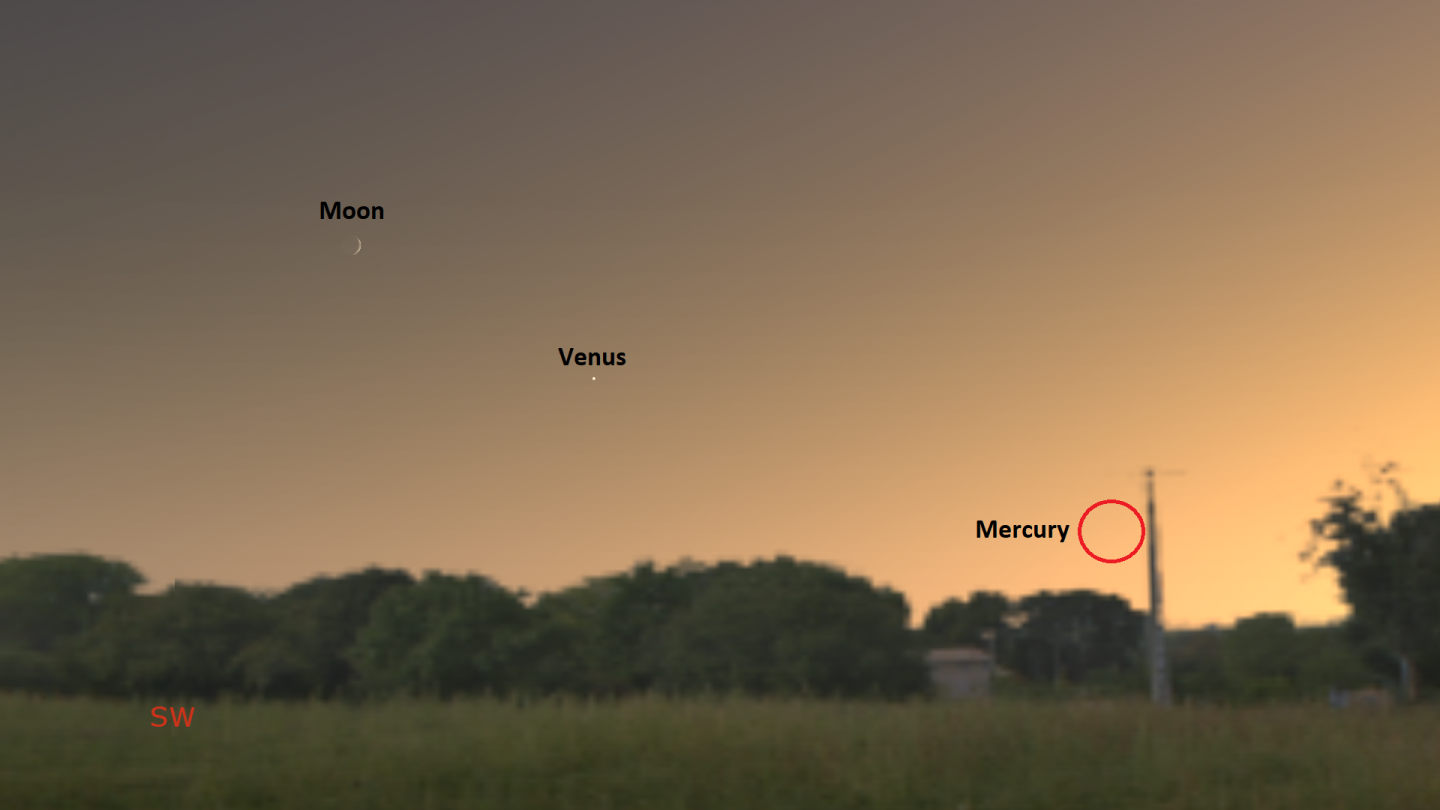
If you’d like to spot the inner planets Mercury and Venus, then have a look towards the west just after sunset on the 10th. You’ll see a thin waxing crescent Moon lying low above the horizon and lying to its right you’ll see the Evening Star, the planet Venus. Mercury lies to the lower right of Venus, but it might be a bit difficult to spot by eye as the planet’s faint light will have to compete with twilight.
22 September: the autumnal equinox
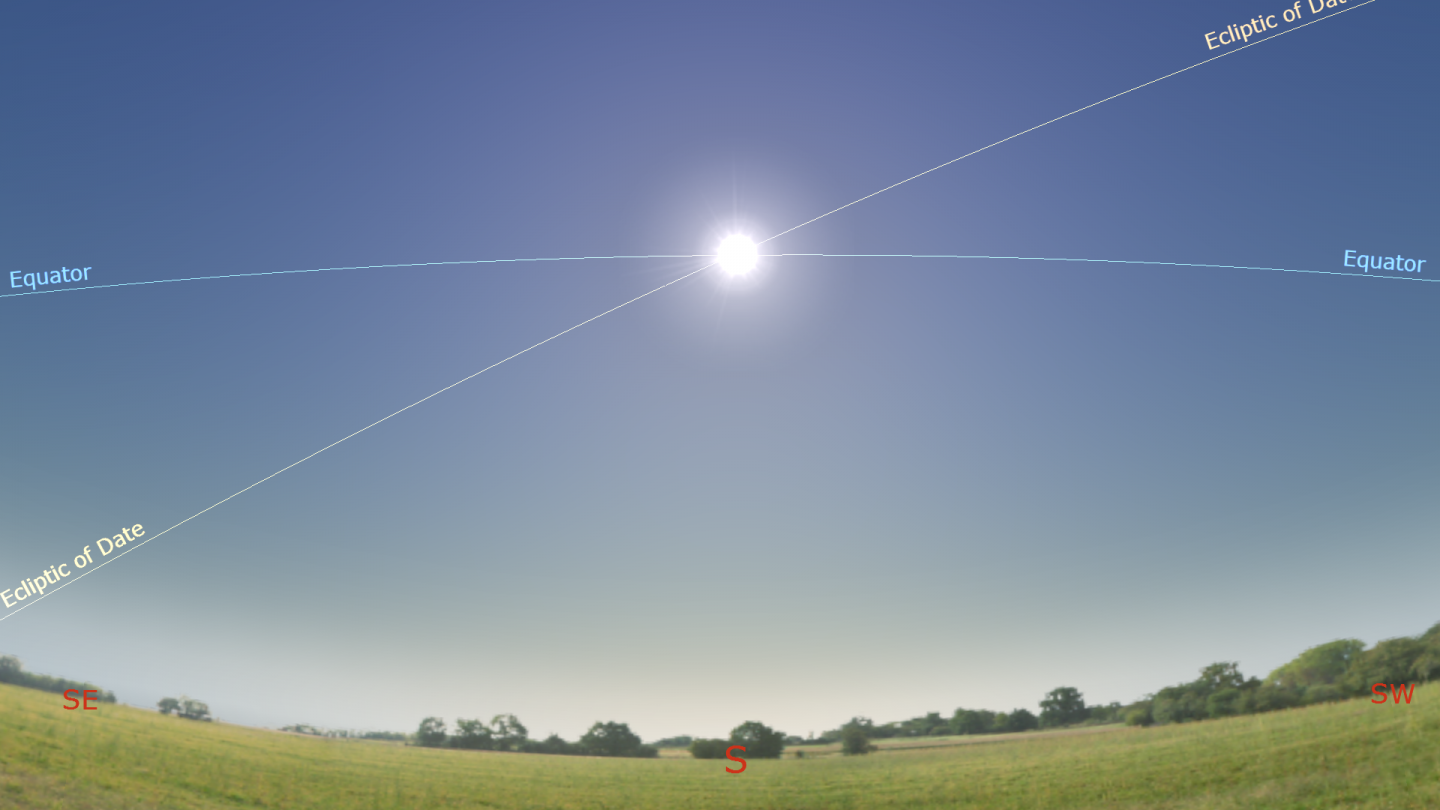
The month of September marks the end of summer and the beginning of autumn. Historically, the September full moon was known as the Corn Moon because it corresponded with the time when crops, such as corn, were gathered at the end of the summer season. But when does summer end and autumn begin? Well, it depends on whether you follow the meteorological or astronomical seasons.
If you follow meteorological seasons, then autumn begins on the 1st of September, but if you follow the astronomical seasons, then autumn officially begins on the 22nd. This date isn’t chosen at random – it corresponds with an event called an equinox. When an equinox occurs, the hours of daylight and darkness are approximately equal, and occurs when the Sun crosses something called the celestial equator, which is simply the projection of the Earth’s equator in space. This happens twice per year, once in March and the other in September.
In September, the Sun crosses the celestial equator on the 22nd and will be moving from north to south. In the northern hemisphere we call this the autumnal equinox as it marks the beginning of autumn for the northern hemisphere and the beginning of spring for the southern hemisphere. As we move beyond the autumnal equinox, the number of hours of darkness will steadily increase for those of us living in the northern hemisphere which is great news for stargazers.
Southern Hemisphere: Throughout the month - the Magellanic Clouds
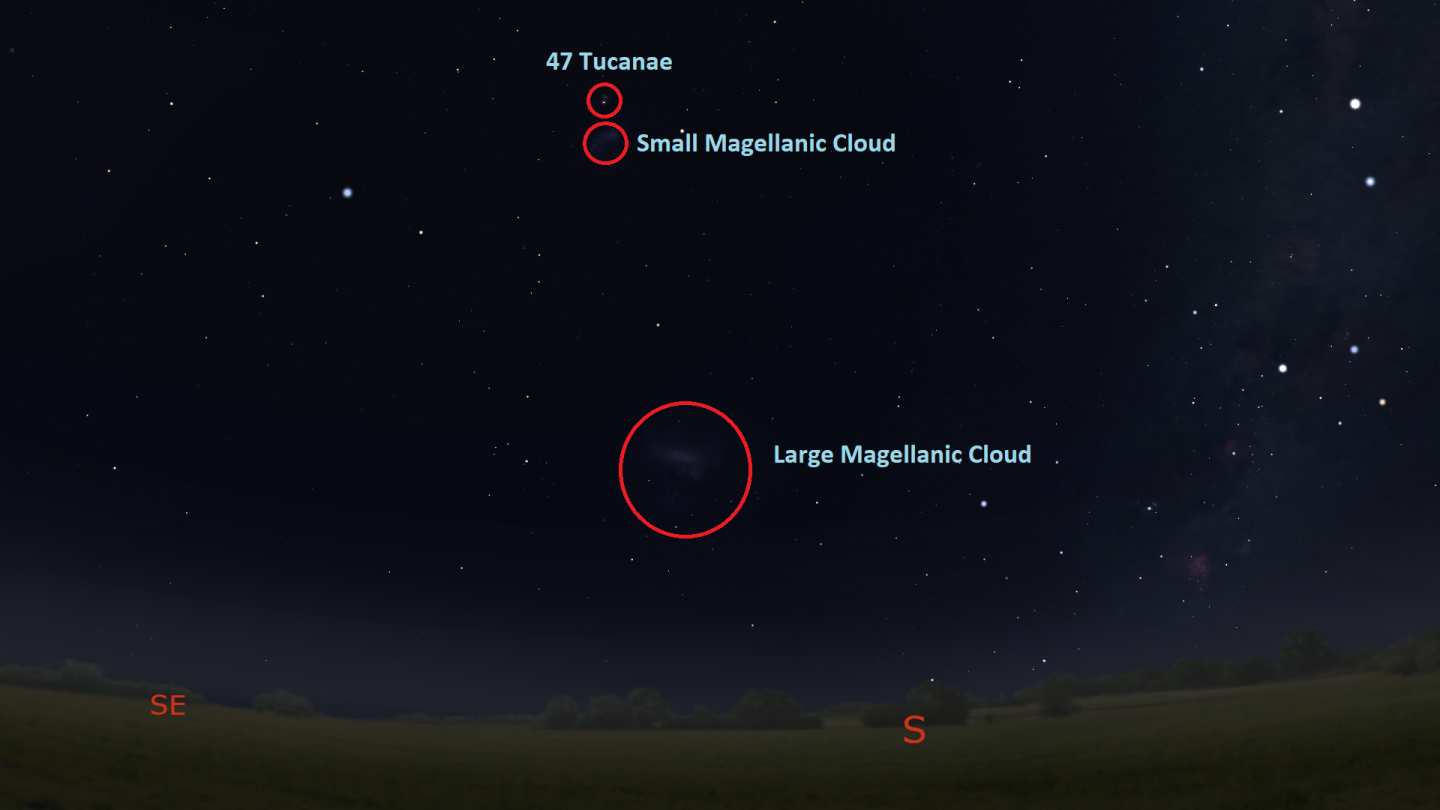
With spring returning to the southern hemisphere, the number of hours available for stargazing starts to decrease, but the good news is that there are still many wonderful things up in the sky for you to enjoy. Appearing as two fuzzy clouds in the southern sky are the Large and Small Magellanic Clouds. While these fuzzy clouds of stars may appear to belong to our home galaxy, they are in fact galaxies of their own.
These two dwarf galaxies are satellite galaxies of our Milky Way galaxy and despite looking like they might be within reach, both galaxies are far, far away – the Large Magellanic Cloud lies around 180,000 light-years from the Earth while the Small Magellanic Cloud lies around 200,000 light-years from the Earth. The Large Magellanic Cloud is home to the Tarantula Nebula, a star forming region so massive that if it were placed inside our Milky Way at the location of the Orion Nebula, the Tarantula Nebula would be visible during the day and would cover a quarter of the sky!
Lying close to the Small Magellanic Cloud is a breathtaking globular star cluster called 47 Tucanae, or 47 Tuc for short. This dense stellar swarm is home to hundreds of thousands of stars, all tightly bound by gravity.
Where do the names of the planets come from?
With the exception of the Earth, all of the planets in our solar system have names from Roman or Greek mythology.
- Mercury is named after the messenger for the Roman gods.
- Venus is named after the Roman goddess of love and beauty.
- Mars is the Roman god of war.
- Jupiter was the King of the Gods in Roman mythology, an appropriate name for the largest planet in our solar system.
- Saturn is the Roman god of agriculture and wealth.
- Uranus is named after the Greek god of the sky. The Roman counterpart is Caelus.
- Neptune is named after the Roman god of the Sea.
Learn more about the night sky
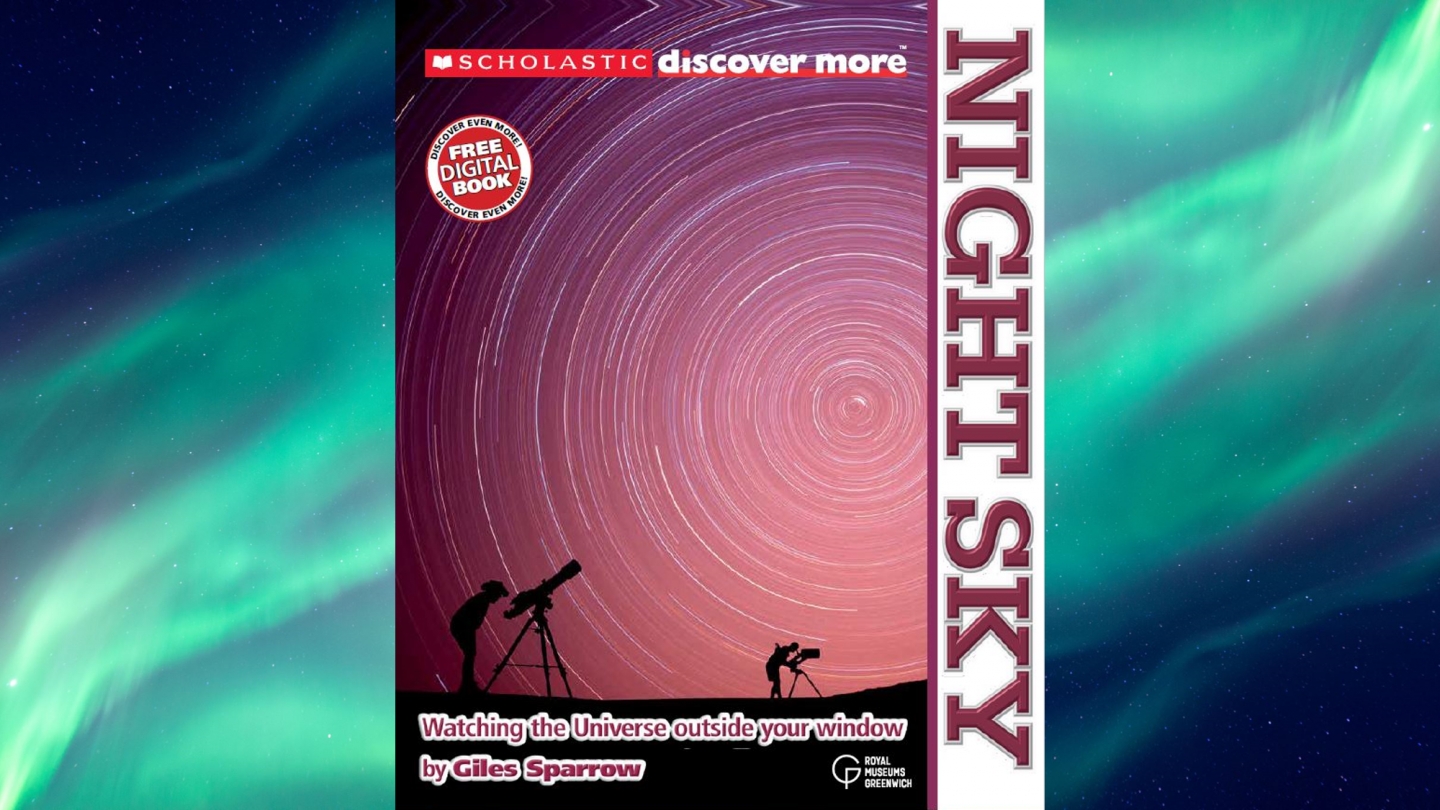
Special offer for secondary schools
Exclusive Royal Museums Greenwich publication Night Sky, for KS 4/5, is a spectacular guide to the night sky and an introduction to stargazing for young astronomers.
Discover all the major constellations and their highlights and history. Explore other worlds above your head, from our neighbours the planets to galaxies far from our own. Find out how what you can see from your window reveals the secrets of our incredible Universe.
The Royal Observatory Greenwich are offering copies to secondary schools at a discounted rate of £3 per copy. If this is of interest, please contact publishing@rmg.co.uk for more information.
The Moon's phases this month
- 7 September: new moon (1:52 am)
- 13 September: first quarter moon (9:39 pm)
- 21 September: full moon (12:55 am)
- 29 September: last quarter moon (2:57 am)
'From the dark side © László Francsics' was one of the highly commended images from the 2018 Insight Investment Astronomy Photographer of the Year competition. See the shortlisted images from 2021's Astronomy Photographer of the Year competition
Stargazing Tips
- When looking at faint objects such as stars, nebulae, the Milky Way and other galaxies it is important to allow your eyes to adapt to the dark – so that you can achieve better night vision.
- Allow 15 minutes for your eyes to become sensitive in the dark and remember not to look at your mobile phone or any other bright device when stargazing.
- If you're using a star app on your phone, switch on the red night vision mode.
Need a stargazing telescope or binoculars? Check out our range of high quality observing equipment recommended by Royal Observatory Greenwich astronomers.
See our range of observing equipment
Share your pictures
This month's banner image is 'Milky Way Shining Over Atashkooh' taken by Masoud Ghadiri and it is one of the shortlisted images from the Insight Investment Astronomy Photographer of the Year competition 2018.
Do you have any images of the night sky? If so, why not share your photos via our Royal Observatory Astrophotography Facebook group.
You can also connect with us via Twitter: @ROGAstronomers
Subscribe to our YouTube channel and join us on a journey through time and space as we explore our Universe.
Planetarium Shows
Join us for live planetarium shows presented by astronomers from the Royal Observatory Greenwich
Observatory Online
In our Observatory Online video series, our astronomers explore different topics in Astronomy and Space Exploration. You can find these videos, and more, on our YouTube channel.
Resources for teachers and students
The Royal Observatory Greenwich's learning team has also created:
- Free animated videos that answer the biggest questions in astronomy and free resources to go alongside them.
- A whole host of podcasts featuring interviews with real space scientists, astronauts and active researchers working in UK universities.
- A 'learning at home' hub which contains a suite of resources for you to use at home.

